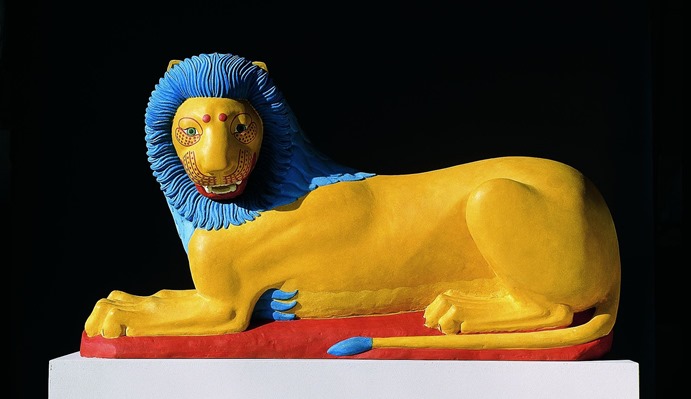Antiquity was white – as white as marble! For hundreds of years this fact has been one of the mainstays in the story of the origin of Western culture: and it remains firmly anchored in the notion we still have of our own culture today. This autumn’s major special exhibition at the Glyptotek in Denmark turns the idea of the white world of Antiquity upside down and shows that Greek and Roman sculpture were colourful to a degree.
Michelangelo and Thorvaldsen in colour? At first the thought seems absurd. But if they and other artists had been aware that the white marble of Antiquity was merely a tenacious myth, Western figurative art would probably have looked radically different. With some 120 original works and reconstructions, among them a large number of outstanding loans from museums in Denmark and abroad, the Glyptotek exhibition demonstrates that Antiquity was anything but sceptical of colour. The exhibition traces the outline of the fascinating story of the development of colour from Greek to Roman sculpture. At the same time the thread is traced back to the better known use of colour in Egypt. And last, but not least, the exhibition points the way forward to some of the exceptions in later Western sculptural art, in which, resistance notwithstanding, polychromy gained a foothold.
The denial of colour
The wealth of colour in Antiquity is not really news, even if is a well-kept secret in broader circles. Early on, colours were clearly visible on ancient sculptures, for instance during the excavations in Pompeii from the mid-18th century, and later still on that citadel of Antiquity, the Acropolis. But the prevailing narrative of the white marble of Antiquity was too strong. From the Renaissance on, artists, art historians and philosophers viewed the pure white sculpture and architecture as an ideal and guide for their own age and thoughts. Antiquity became the quintessence of Western cultural identity and thus, in fact, dissociated itself from the other high cultures of the world through its suppression of vulgar, barbaric colours. White marble became synonymous with the noble and the spiritual – a guarantee of aesthetic, ethical and political superiority. The concrete evidence of Antiquity’s widespread use of colour was, therefore, typically ignored, denied, and, in certain cases, brutally purged from Greek and Roman scuptures.
From microscopy to the history of ideas
This autumn’s major special exhibition presents the results of the noteworthy, pioneering research undertaken by an international network of specialist teams – with the Glyptotek as an important contributor. In 2004 the museum presented an exhibition dealing with polychromy in ancient sculpture, shown first at the Glyptothek in Munich, and subsequently at the Vatican Museums. Since then the research has made considerable progress, as regards a more precise mapping of the development in, and the extent of colour use in the ancient world. This is a case of research of an interdisciplinary, almost detective character with its incorporation of advanced natural scientific methods such as laser, x-rays, infrared reflectography and electron microscopic examination of colour sections from original sculptures. The research results achieved internationally and presented here indicate unequivocally the necessity for a revised picture of Antiquity and thereby also of our own cultural self-awareness.
As if transformed – the Classical world in colour
The exhibition at the Glyptotek shows spectacular original works juxtaposed with experimental reconstructions in their original wealth of colour, the shocking sensuality of which, at one and the same time, makes Antiquity both more present and remote. In the course of the exhibition the story of the development of colour in the art of sculpture unfolds; from the first, very insistent, but extremely effective use of strong local colours on marble, towards a higher and more refined degree of naturalism. At the same time the exhibition shows that our reading of the classical motifs sometimes changes radically when the sculptures appear in colour.
The mainstay of the exhibition’s storyline is chronology; but thematic interludes with each their focus ensures variety in the sequence of ‘chapters’. Accordingly there is a “zoom” in and out, from the ”big” story to close-ups of periods and individual works. In the same spirit the various investigative methods are documented and put into perspective.







